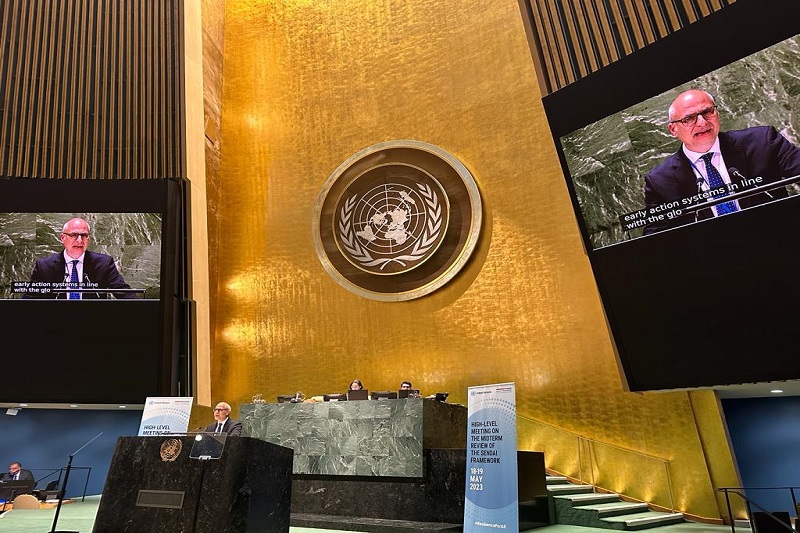The Head of Department Fabrizio Curcio participates in the Sendai Framework for Disaster Reduction 2015-2030
From New York, Curcio constantly followed the evolution of the weather emergency affecting Emilia Romagna

"In Italy we have a solid legislature for the management of emergencies and we have developed an effective plan to deal with disasters, but the amount of investment must generate a real impact on risk reduction, which is still too high". This was stated by the Head of the Civil Protection Department, Fabrizio Curcio, at the UN Headquarters in New York on the sidelines of the high-level meetings held on 17 and 18 May as part of the Sendai Framework for Disaster Reduction 2015-2030.
During his permanence in New York, Mr. Curcio has been in close contact with the Civil Protection Department to personally follow the national emergency that is affecting many areas of the country, in particular Emilia-Romagna, and that involves the National Service of Civil Protection working in the field to rescue, assist and evacuate areas at risk and secure the territories. The Head of the Department opened his speech by recalling, "the chain of multiple extremely intense events that hit the Emilia-Romagna region, causing serious damage and lives lost," to highlight even more how important prevention is in light of the new challenges arising from climate change.
The sessions were convened on the occasion of the mid-term review of the Sendai Framework, a set of commitments made by the international community to prevent the emergence of new disaster risks and reduce existing ones through the implementation of integrated and inclusive economic, structural and legal measures that prevent and reduce exposure, increase preparedness and build resilience.
The Sendai Framework for Disaster Risk Reduction 2015-2030 aims to achieve substantial disaster risk and loss reduction by 2030 and runs in parallel with the 2030 Agenda for Sustainable Development and the Paris Agreement on Climate Change.